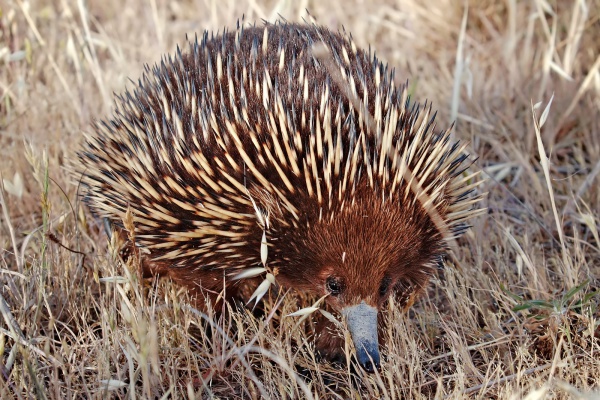Facts About Short-beaked Echidna, Spiny Anteater
The short-beaked echidna is one of nature’s most unique and captivating creatures. It is one of four extant echidna species and the only one classified in the Tachyglossus genus. This spiny mammal is enveloped in fur and spines, distinguished by its characteristic snout and a specialized tongue engineered to capture insects with remarkable speed. As monotremes, echidnas are among the few egg-laying mammals on Earth, producing just one egg per year. They typically lead solitary lives, except during the mating season. Baby echidnas, known as puggles, mature quickly on their mother’s nutrient-rich milk before transitioning from the pouch to a burrow.
Echidnas are widely distributed across Australia and parts of New Guinea. However, they are increasingly threatened by human activities such as hunting, habitat destruction, and the introduction of invasive species. Historically, the echidna has undergone several taxonomic reclassifications, with its current scientific designation being Tachyglossus aculeatus. It belongs to the family Tachyglossidae, along with other echidna species in New Guinea. Fossil records indicate that echidnas have ancient origins dating back millions of years.
Echidnas possess several unique adaptations that support their survival. They can burrow, tolerate high levels of carbon dioxide, and enter states of torpor and hibernation to conserve energy. Physically, echidnas are characterized by short limbs, powerful claws, and a specialized tongue ideal for capturing prey. Their fur and spines provide insulation, and their unique digestive system and low body temperature allow them to thrive in diverse environments. Additionally, their brains, sensory organs, and reproductive systems are highly adapted to their lifestyle.
Ecologically, echidnas play a critical role in maintaining healthy ecosystems through their digging activities, known as bioturbation. They are primarily diurnal but can modify their behavior based on temperature conditions. Despite their adaptability, echidnas face threats from predators, habitat loss, and diseases, leading to localized extinctions in some regions.
Echidnas reproduce between May and September, with courtship involving multiple males competing for a female's attention. Females lay a single egg, which hatches in the pouch. The young, or puggles, are nourished on milk until they are weaned at around six months old. Echidnas have a slow reproductive rate but can live up to 40 years in the wild.
Conservation efforts are in place to protect the short-beaked echidna, given its ecological importance and cultural significance to Indigenous Australians. Captive breeding programs face challenges due to the echidna’s complex reproductive cycle. This extraordinary mammal also holds a special status in Australian culture, frequently depicted in art and commemorative items.
